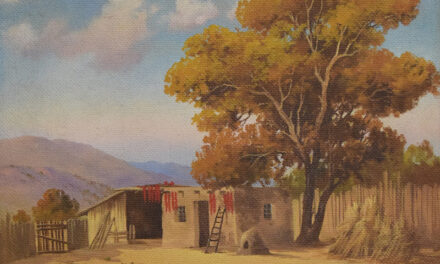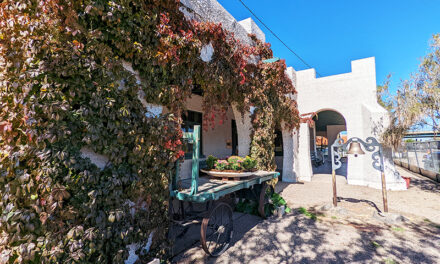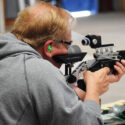Belen
Playing the fiddle is in Carley Stump’s blood.
As a boy in Oklahoma, Stump listened to and watched his father make the fiddle cry and sing. He knew one day he wanted to play.
“I was unable to buy one, so I decided to make one,” the 86-year-old man said of the task he undertook 70 years ago as a young man.
“We didn’t have electricity or electric tools back then, so I had to do everything with hand tools,” he said. “It took be about six months.”
Stump decided to use black walnut and maple for his fiddle. His father helped him cut down trees to get the wood.
“I took two pieces out of the middle of the black walnut wood and used a chisel and hammer to cut the curve of the top and bottom,” Stump said. “When I was working on them, my uncle wanted to know what I had. He said, ‘Are those tortoise shells?’ That’s what they looked like.”
Between plowing the fields, Stump would carve on the wood under a shade tree.
“I made the neck out of maple and carved the scroll at the end with a chisel. I notched it for each string to lay around the end,” he said as he showed his work on the 70-year-old three-quarter-size violin.
When it came time to shape the sides of the body — known as the bout — Stump traced the shape of the top and bottom on a board and used headless finishing nails to form a track inside the traced line.
“I used walnut wood for the sides. After heating the strips in hot water, I bent them into the tracks,” he said.
Stump even had to make his own clamps to hold the top and bottom to the sides while he glued the pieces together.
The final pieces were the tuning pegs, or keys, as Stump calls them. “I had to whittle the keys and drill out the hole in which they sit,” he said.
The resourceful young man cut hair from his horse’s tail to make the bowstrings.
“When it was done, I started teaching myself how to play it. Mom sent me to the barn to practice until I could play the fiddle,” he said.
Through the years, Stump has picked up other fiddles, including the one his late brother-in-law, Olin G. Baker, played.
“I’ve passed on a couple to my nephew and his daughter when they wanted to learn to play,” he said.
Since coming to New Mexico in 1936, Stump has found himself in various places, working on construction crews and as a welder.
“I’ve done trades of all kinds,” he said. “Everything from working in the ship yards in Portland, Ore., and San Diego, Calif., to helping build the ammunition dump at Fort Wingate.”
Playing the fiddle has been a source of enjoyment and extra money for the father of seven children and two step-children.
“I got a band up, and we’d play at various dances,” he said. “Most of the time, we’d play for free. But, other times, we’d play for drinks and tips.”
Twenty-six years ago, Stump’s second wife, Bonnie, and their friend, Martha Spears, started an annual tradition to honor him.
“They rented a hall and gave me a surprise party,” he said. “We do it every year now. I get all my gang together, and we play for the party.”
While he plays Baker’s fiddle these days, he still has the one he made back in Oklahoma.
“One of my daughters wants the fiddle,” he said. “A while back, when I was tuning the fiddle, the pressure of the strings on the neck was too much for it, and the neck popped off. We need to glue it back together.”
It doesn’t take much to get Stump to pull out the fiddle and play a little toe-tapping music, such as “Wabash Cannonball” or “Home Sweet Home” in “waltz fast time,” as he described it.
“I still enjoy playing. It gives me something to do,” he said. Making music brings back memories of the days when he was a boy in Oklahoma, listening to his father play.
















